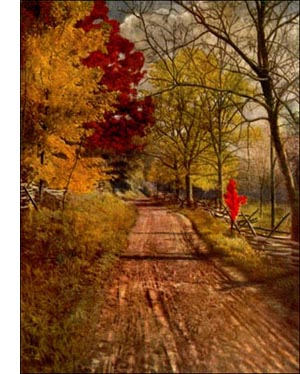Great Sugar Pine Tree
 Great Sugar Pine (P. Lambertiana, Dougl.)-A majestic tree, 200 to 220 feet high, 6 to 10 feet through, pyramidal, becoming flat topped, with spreading, pendulous branches. Bark thick, furrowed, breaking into plates; dark grey, becoming purplish or cinnamon-red. Wood brownish, straight grained, soft, light. Buds pointed, scaly, clustered at tips. Leaves stout, stiff, 3 to 4 inches long, in fives, sheathed, serrate, needle-like, dark green. Flowers much like those of P. Strobus. Fruits 12 to 18 inches long, heavy, scales 2 inches long and t12 inches wide; seeds ripe in second autumn, edible. Preferred habitat, mountain slopes and canon sides. Distribution, coast region in mountains from Oregon into Lower California. Uses : Unsuccessful in cultivation; lumber used in carpentry, for doors, blinds, sashes, shingles and in cooperage. Sap yields sugar.
Great Sugar Pine (P. Lambertiana, Dougl.)-A majestic tree, 200 to 220 feet high, 6 to 10 feet through, pyramidal, becoming flat topped, with spreading, pendulous branches. Bark thick, furrowed, breaking into plates; dark grey, becoming purplish or cinnamon-red. Wood brownish, straight grained, soft, light. Buds pointed, scaly, clustered at tips. Leaves stout, stiff, 3 to 4 inches long, in fives, sheathed, serrate, needle-like, dark green. Flowers much like those of P. Strobus. Fruits 12 to 18 inches long, heavy, scales 2 inches long and t12 inches wide; seeds ripe in second autumn, edible. Preferred habitat, mountain slopes and canon sides. Distribution, coast region in mountains from Oregon into Lower California. Uses : Unsuccessful in cultivation; lumber used in carpentry, for doors, blinds, sashes, shingles and in cooperage. Sap yields sugar.The largest, noblest, and most beautiful of all the seventy or eighty species of pine trees in the world "-thus writes John Muir, who knows the sugar pine of the Sierras as he knows his other neighbours, the mountains and the glaciers, with which he has kept fellowship all his life. Fortunately these gigantic pines do not go down to the sea, nor overhang the banks of seawardtending streams to tempt the lumberman. The hungry mills would have swallowed the best of them long ago had not Nature fenced them in by barriers too great to be overpassed, and the Government has now, by the reservation of the Yosemite National Park, insured the preservation of these mighty pines in sufficient number to remind those who visit the region of what all the Sierra forests were before they were laid waste.
The cones of the sugar pine are the longest known. In spring cone flowers an inch in length stand upright in clusters; they thicken, lengthen and turn down on the coming of the second spring. They are now 2 or 3 inches long, and quite heavy. By September they are close to 2 feet in length and 3 or 4 inches in diameter, pale green, flushing to purple on the side exposed to the sun. High above the earth these cones hang like dangling tassels, none too large for the giant arm that holds them forth. Now the scales spread, and the cone's diameter is doubled. The seeds fall, and are frugally hoarded by squirrels, bears and Indians, for their food value is no secret to any creature that has tasted them. The empty cones hang on the trees until the new crop is ready to harvest, and hard on its heels are the half-grown yearlings, sealed tight to encounter the untried winter weather.
The wood of the sugar pine is the apotheosis of pine lumber. Soft, golden, satiny, fragrant-inviting the woodworker through every one of his senses to handle it. Crystals of sugar accumulate at the end of a stick when it is burning-the bleeding of the heart wood, which gives the trees its name. White masses, crisp and candy-like, gather at axe wounds. It tastes like maple sugar, but one is soon surfeited in eating it.
Up the mountain side, where these trees grow to greatest size, the shingle maker climbs and pitches his tent in spring. He fells the biggest tree he can find, never caring whose it is, saws out a few blocks of shingle length (often only one), above the stump, and splits it into shingles. Why should he discard the rest of that great trunk and fell another, leaving the first to rot and to invite forest fires? There might be a knot in the next section, and who is he that he should worry himself over knotty lumber? So he does not stay his axe and saw all through the season, and has bundles of shingles to sell in the valley, all made from straight-grained sugar pine from the butts of logs. For every bundle he has to sell he has destroyed thousands of feet of lumber. He and thieving mill owners are companions in crime, and should be in the state prison together. For each has been preying upon the public forest lands for years.
The sugar pine is various in form, spreading its slender arms like feathery drooping plumes. Like the crown of a palm tree, but far broader than the royalest of palms, it rises above a feath-ering of shorter branches, and above all neighbour trees. Or with more room, the tapering spire of a fir tree is imitated. The average tree tapers to the top, and is feathered half way down with short horizontal branches.
"The old trees are as tellingly varied and picturesque as oaks. No two are alike, and we are tempted to stop and admire every one we come to as it stands silent in the calm, balsamscented sunshine or waving in accord with enthusiastic storms. No traveller, whether he be a tree lover or not, will ever forget his first walk in a sugar-pine forest." John Muir.